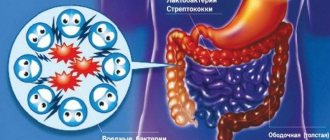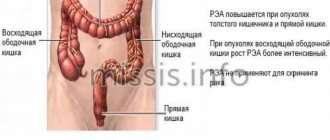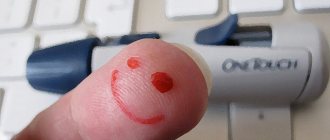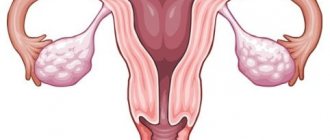Our official partner in the provision of DNA testing services is the Medical Genomics laboratory. This is one of the most modern genetic laboratories in Russia today. Medical Genomics specialists have the expertise and all the necessary equipment to conduct a wide range of DNA tests: determination of paternity, kinship, forensic DNA analysis and much more.
Every second DNA analysis in Russia is done at Medical Genomics. The Medical Genomics laboratory operates in accordance with the legislation of the Russian Federation, has a license, and has conducted more than 1000 forensic examinations, the results of which are accepted by all courts in the territory of the Russian Federation.
We trust Medical Genomics so you can trust us!
Link to the official website of our partners:
https://medicalgenomics.ru/
Link to video presentation of our partners:
How samples of biomaterial are collected for DNA analysis
Modern scientific technologies have made it possible to simplify as much as possible the procedure for obtaining biological material for DNA research. Until recently, blood was most often used for paternity testing, which caused significant inconvenience. Now DNA paternity testing is carried out using saliva, hair, nails, etc. The standard test is performed on samples collected using sterile probes from the back of the cheek. The procedure is completely painless and takes only a few minutes.
How to properly collect biomaterial samples:
Confidentiality guaranteed.
The ease of collecting material for analysis allows you to do it yourself at home. If desired, the research can be conducted anonymously, without providing documents.
Services:
Establishment of paternity/maternity by DNA analysis
Is this my child? This question has worried people for hundreds of years for many reasons - both purely psychological and legal, for example, the order of inheritance.
There are also many cases where families have been raising other people’s children for many years, who were mixed up in the maternity hospital due to the negligence of medical workers.
Statisticians estimate that about 8% of men raise other people's children without knowing it.
And yet the truth is needed and can be found out...
A DNA paternity/maternity test allows you to determine whether a man/woman can be the biological father/mother of a particular child or not. There are two possible analysis results: (1) exclusion of paternity/maternity and (2) non-exclusion of paternity/maternity.
The probability of non-exclusion of paternity is 99.9999% or higher. The probability of excluding paternity is 100%.
The study can involve both the child and the alleged father/mother - this test is called “Duet”, and the expected father/mother, biological mother/father and child - this test is called “Trio”.
Price for a standard paternity/maternity test:
| Paternity/Maternity Test (Duet) | 20 markers | 11200rub |
| Paternity/Maternity Test (Duet) | 24 markers | 13400rub |
| Paternity/maternity test (Trio) | 20 markers | 12600rub |
| Paternity/maternity test (Trio) | 24 markers | 15900rub |
Main factors influencing the cost of a DNA test
The final cost of the DNA paternity test procedure depends on the following factors:
- the presence of various markers of biological material;
- quality of the research subject;
- urgency of performing laboratory tests;
- research method (traditional, invasive and non-invasive).
In some cases, a DNA test can be done for only 5-7 thousand rubles. However, such a price is unlikely to give a reliable result, so you should not save money - you need to order the service in specialized laboratories that have the appropriate certificates. Therefore, if you want to get a 100% result, you should contact licensed medical institutions such as Lab-DNK.
Twin DNA test
Why is this analysis needed?
Firstly, out of curiosity. Secondly, a guarantee in case of medical intervention -
the fact is that identical twins are ideal donors for each other.
The purpose of a twin DNA test is to accurately determine whether
Twins are fraternal or identical. There are two possible results of the analysis: (1) participants can be identical twins and (2) participants can be fraternal
twins. The accuracy of the analysis when confirming identical identity is 99.9999% and higher, with
exception – 100%. DNA samples from two twins are required for analysis.
Standard twin test price available on request.
What does a DNA test look like?
A DNA test is an examination, the results of which are documented on a special letterhead containing all the necessary details - the name of the company, the date of the analysis, the results, the signature of the head of the laboratory and seals.
When establishing paternity, a positive result is indicated with a probability of 99.999999% . In addition to the expert opinion, the document contains genetic passports of individuals who participated in the study - unique information about the structure of their DNA.
If desired, the DNA test can be done anonymously. without indicating the name or date of birth of the participants.
Sibling test (sibling test)
Any family secret can be revealed. There are many cases when, years later, it turns out that
maybe it's your brother or sister. DNA sibling testing can determine whether suspected siblings are biological. You can find out whether there are two common parents (siblings) or one common parent (stepbrother/sister).
There are two types of sibling test:
- full-siblin test (when participants know for sure that they have one common parent and want to determine whether they have the same second parent);
- half-sibling test (when one parent of the analysis participants may be common, but the other is definitely not).
There are three possible analysis results:
- participants can be full (or half-) siblings,
- sibling relationship is unlikely
- indeterminate result (when genetic data do not allow us to draw conclusions about the possibility of a particular relationship)
If the probability of relationship is 80% or higher, a conclusion is issued that the sibling relationship
perhaps, with a probability of 10% or lower, a conclusion is issued that the relationship is unlikely. With values of the probability of relationship ranging from 10% to 80%, it is impossible to say how much
there is probably some kind of relationship between people, so an indefinite conclusion is issued.
The analysis requires DNA samples of two people who are believed to be siblings, half-siblings, or brother and sister
The price of a standard (semi-) sibling test is on request.
Genetic examination (DNA examination)
1. Establishment of paternity/maternity by DNA analysis
Is this my child? This question has worried people for hundreds of years for many reasons - both purely psychological and legal, for example, the order of inheritance.
Statisticians estimate that about 8% of men raise other people's children without knowing it.
And yet the truth is needed and can be found out...
A DNA paternity/maternity test allows you to determine whether a man/woman can be the biological father/mother of a particular child or not. There are two possible analysis results: (1) exclusion of paternity/maternity and (2) non-exclusion of paternity/maternity. The probability of non-exclusion of paternity is 99.9999% or higher. The probability of excluding paternity is 100%.
The study can involve both the child and the alleged father/mother - this test is called “Duet”, and the expected father/mother, biological mother/father and child - this test is called “Trio”.
The price of a standard test to establish paternity/maternity is from 12,000 rubles.
2. Twin DNA test
Why is this analysis needed?
The purpose of a twin DNA test is to accurately determine whether twins are fraternal or identical. There are two possible results of the analysis: (1) participants can be identical twins and (2) participants can be fraternal twins. The accuracy of the analysis when confirming identical identity is 99.9999% and higher, when excluding it – 100%. DNA samples from two twins are required for analysis.
The price of a standard twin test starts from 12,000 rubles.
3. Sibling/half-brother/sister by DNA analysis (Sibling test)
DNA sibling testing can determine whether suspected siblings are biological. You can find out whether there are two common parents (siblings) or one common parent (stepbrother/sister).
There are three possible analysis results:
- participants can be full (or half-) siblings,
- sibling relationship is unlikely
— uncertain result (when genetic data do not allow us to draw conclusions about the possibility of a particular relationship)
The analysis requires DNA samples of two people who are believed to be siblings, half-siblings, or brother and sister
The price of a standard (semi-) sibling test is from 16,000 rubles.
4. Grandmother/grandfather grandson/granddaughter
As a rule, an analysis between a grandfather (grandmother) or grandparents and a child is carried out in cases where the biological father (less often the mother) of the child is absent and it is necessary to prove whether the biological son (or daughter) of the grandparents could be the biological parent of the child.
There are four possible analysis results:
- probably related
- relationship is unlikely
— uncertain result (when genetic data do not allow us to draw conclusions about the possibility of a particular relationship)
- kinship is completely excluded (only for cases where both grandparents are involved).
If the probability of relationship is 80% or higher, a conclusion is issued that a biological relationship is possible; if the probability is 10% or lower, a conclusion is issued that the relationship is unlikely. With values of the probability of relationship in the range from 10% to 80%, it is impossible to say how likely this or that relationship between people is, therefore an indefinite conclusion is issued.
Samples from a child and a grandparent, or a child and a grandparent, are required for analysis.
The price of the grandmother/grandfather grandson/granddaughter test is from 15,000 rubles.
5. Analysis of Y - chromosomes
Relationship in the male line is determined by examining the Y chromosome. This is one of two chromosomes in the human body that determines its gender.
Women have two X chromosomes, one of which they pass on to their child. For men, everything is more complicated: the male genotype formula looks like XY, and the father will pass on the X chromosome to his daughter, and the Y chromosome to his son. Thus, the Y chromosome is passed on practically unchanged to all male descendants from generation to generation.
The Y chromosome test allows you to determine how closely two men are related on the same paternal line (i.e. grandfather, grandfather's siblings - father, father's siblings - son, sons of father's brothers). And the conclusion is given based on the analysis of the Y chromosome.
This test can confirm or refute whether two men are members of the same family (provided they have the same presumed male progenitor).
This test can also be used to establish paternity in boys in the absence of father's DNA, when it is possible to test samples from the paternal grandfather or the father's sibling. The analysis requires DNA samples from two men who may presumably belong to the same male line.
The price of the Y-chromosome test is from 15,000 rubles.
6. Analysis of X chromosomes
This test has limited use, but can sometimes help establish relationships when other tests are indeterminate.
It is only suitable in cases where the child is a girl (girls receive an X chromosome from their father), the putative father is not available for analysis, but his biological mother or paternal sister is available. Unlike other kinship tests, X chromosome analysis allows you to rule out kinship. If the relationship is not excluded, the probability and the relationship index are calculated. Samples from a child (girl) and her female paternal relative are required for analysis. The accuracy of the study increases significantly with the additional participation of the child’s biological mother. When the study is conducted with the alleged grandmother and she has another son besides the alleged father of the child, the accuracy of the analysis increases if his sample is provided for analysis.
The price of the X chromosome test is from 16,000 rubles.
7. Identification of a person by DNA - Genetic Passport.
DNA is part of the chromosomes located in the cell nucleus and is classified as nucleic acids. It is designed to transmit and store genetic information for the development of all living things.
The DNA code is ideal information about a person’s biometric parameters. Despite the fact that 99.5% of DNA is the same in all people, 0.5% of this code is enough to identify each of us. One in a trillion - this is the probability of a complete DNA match between different people. The exception is identical twins, for whom this code is completely identical. It's like fingerprints are unique to each person.
The price for identifying a person by DNA is from 65,000 rubles.
8. DNA test for treason
Suspicion of a marital relationship arises in many families. The situation requires a special approach, so we guarantee complete confidentiality and are ready to examine the most unusual sample.
A DNA test for infidelity will help you identify the fact of infidelity, or, on the contrary, dispel your doubts.
Detection of the fact of treason is possible if one of the parties has biological material allegedly left by a third party. These can be traces of biological origin left on linen, clothing, hair, personal hygiene products, underwear, etc.
A DNA test for treason boils down to comparing the genotypes of biomaterial left on clothes or underwear with your genotype (or the genotype of suspected persons).
Technologies in the field of DNA examination make it possible to identify samples with 99.9% accuracy or challenge it 100%.
The price of a DNA test for treason starts from 20,000 rubles.
You can get advice from our specialists or order an examination:
— by a single telephone (calls within Russia are free) 8-800-500-32-03
- by email;
— by filling out an online application on our website.
independent examination, DNA examination, genetic examination, genetic research, DNA, genetics, cost of genetic examination in Rostov, Voronezh, Crimea, Volgograd, Krasnodar, Stavropol, Novorossiysk, Yeisk, Grozny, Vladikavkaz, Kaspiysk, Simferopol, price of genetic examination, medical examination , paternity examination, genetic paternity examination price in Grozny, genetic examination of hair, genetic examination of hair cost, DNA test for hair cost, DNA paternity test price, DNA paternity test in Rostov price, DNA paternity test for court , DNA paternity test, DNA test for nationality, DNA test to determine the sex of a child price, genetic examination for kinship, genetic examination for kinship price, genetic examination of DNA
Grandmother/grandfather grandson/granddaughter
Typically, the analysis is between the grandparent or grandparent and the child
carried out in cases where the biological father (less often the mother) of the child is absent and it is necessary to prove whether the biological son (or daughter) of the grandparents could be the biological parent of the child.
This test also allows you to draw a conclusion about the presence of a relationship between a grandfather (or grandmother) and
prospective grandson (or granddaughter). There are two types of tests for this type of relationship - (1)
grandson (granddaughter) and grandmother (grandfather) and (2) grandson (granddaughter), grandparents.
Using samples from grandparents significantly improves the accuracy of the analysis and
In certain cases, it makes it possible to completely exclude kinship (which is impossible in cases where
Only a sample from a grandmother or grandfather was provided for analysis).
There are four possible analysis results:
- probably related
- relationship is unlikely
- indeterminate result (when genetic data do not allow us to draw conclusions about the possibility of a particular relationship)
- kinship is completely excluded (only for cases where both grandparents are involved).
If the probability of relationship is 80% or higher, a conclusion is issued that the biological relationship
perhaps, with a probability of 10% or lower, a conclusion is issued that the relationship is unlikely. With values of the probability of relationship ranging from 10% to 80%, it is impossible to say how much
there is probably one or another relationship between people, so an indefinite conclusion is issued.
Samples from a child and a grandparent, or a child and a grandparent, are required for analysis.
Price for grandma/grandfather grandson/granddaughter test – on request.
Detailed description of the study
Attention! Biomaterial for research is accepted only in some laboratory departments:
- Moscow, Chistye Prudy metro station, Rozhdestvensky Boulevard, 21, building 2;
- Moscow, metro station "Sviblovo", st. Snezhnaya, 17, bldg. 1;
- Moscow, metro station "Otradnoe", st. Dekabristov, 21;
- Moscow, metro station "Sportivnaya", st. Khamovnichesky Val, 14;
- Moscow Region, Lyubertsy, Oktyabrsky Prospekt, 183;
- Moscow Region, Mytishchi, st. Vera Voloshina, 46;
- MO, Podolsk, st. them. 50 years of the Komsomol, no. 16;
- St. Petersburg, Fontanka River Embankment, 103;
- Rostov-on-Don, st. Cherevichkina, 5a;
- Ekaterinburg, st. March 8, 110;
- Grozny, st. U. A. Sadaeva, 1;
- Novosibirsk, st. Sibiryakov-Guardsmen;
- Nizhny Novgorod, Kazanskoye shosse, 4;
- Simferopol, st. Kyiv, 19–21.
DNA paternity testing is performed twice. To do this, two samples of biomaterial are taken from each participant. Test results are compared to ensure they are identical, thereby reducing the risk of error due to material contamination. The results of each study are checked again before being sent to the patient.
Molecular genetic research is based on a comparison of alleles of certain loci (sections of DNA) that are inherited by a child from biological parents. For analysis, DNA is isolated from material obtained from both individuals participating in the study. The required alleles are numbered according to standard international nomenclature, which makes it possible to compare results obtained in different laboratories. The absence of matching alleles at three or more loci excludes the possibility of relationship.
During life, a person's DNA does not change. It is the same in all biological materials obtained from the same person, so it does not matter which material is selected for research.
Uncle/aunt nephew/niece
There are situations in life when it is necessary to prove the existence of a relationship between an uncle/aunt and a nephew or niece. Is it possible?
In the 21st century, of course….The relationship between an uncle or aunt and nephews is certainly not as close as with a father or mother.
The exception is the case when, for example, the uncle is the father's identical twin. Because the
the genotypes of such twins are identical; 50% of the uncle’s genes will coincide with the genes of his nephews.
There are three possible analysis results:
- probably related
- relationship is unlikely
- uncertain result (when genetic data do not allow us to draw conclusions about the possibility of a particular relationship).
If the probability of relationship is 80% or higher, a conclusion is issued that the relationship is possible; if the probability is 10% or lower, a conclusion is issued that the relationship is unlikely. With values of the probability of relationship in the range from 10% to 80%, it is impossible to say how likely this or that relationship between people is, therefore an indefinite conclusion is issued.
The analysis requires DNA samples from two people who are supposedly related.
Price for the Uncle/Aunt Nephew/Niece test – on request.
Y-chromosome analysis
Relationship in the male line is determined by examining the Y chromosome. This is one of two chromosomes in the human body that determines its gender.
Women have two X chromosomes, one of which they pass on to their child. For men, everything is more complicated: the male genotype formula looks like XY, and the father will pass on the X chromosome to his daughter, and the Y chromosome to his son. Thus, the Y chromosome is passed on practically unchanged to all male descendants from generation to generation.
The Y chromosome test allows you to determine how closely two men are related on the same paternal line (i.e. grandfather, grandfather's siblings - father, father's siblings - son, sons of father's brothers). And the conclusion is given based on the analysis of the Y chromosome.
This test can confirm or refute whether two men are members of the same family (provided they have the same presumed male progenitor).
This test can also be used to establish paternity in boys in the absence of father's DNA, when it is possible to test samples from the paternal grandfather or the father's sibling. The analysis requires DNA samples from two men who may presumably belong to the same male line.
Price for Y - chromosome test - on request.
DNA is inherited from both biological parents
DNA, or deoxyribonucleic acid, is present in all cells of the body. It consists of four different components called nitrogenous bases: adenine (A), thymine (T), cytosine (C), guanine (G). These four types of DNA “links” are located, like the letters of the alphabet, in strictly defined sequences, in which the “instructions” are encrypted, allowing our body to perform all its functions. DNA contains information that determines our physical characteristics, such as facial features, height, and even the possibility of certain diseases. Human sex cells—the father's sperm and the mother's egg—contain half the normal amount of DNA found in all other cells in the body. During conception, they fuse to form a fertilized egg called a zygote. It contains a complete and unique set of DNA molecules, created by combining DNA strands from both parents. The zygote divides, forming an increasing number of cells and ultimately turning into an embryo. The fact that all cells that form a new organism contain the same DNA—half paternal and half maternal—allows scientists to use simple and convenient sampling methods for paternity and relationship testing. It is possible to take samples at any age and from almost any structural element of the body (hair, mucous membrane scraping, etc.) and get the same results, because these samples contain the same DNA.
X chromosome analysis
This test has limited use, but can sometimes help establish relationships when other tests are indeterminate.
It is only suitable in cases where the child is a girl (girls receive an X chromosome from their father), the putative father is not available for analysis, but his biological mother or paternal sister is available.
Unlike other kinship tests, X chromosome analysis allows you to rule out kinship. If the relationship is not excluded, the probability and the relationship index are calculated. Samples from a child (girl) and her female paternal relative are required for analysis. The accuracy of the study increases significantly with the additional participation of the child’s biological mother.
When the study is conducted with the alleged grandmother and she has another son besides the alleged father of the child, the accuracy of the analysis increases if his sample is provided for analysis.
Price for X-chromosome test - on request.
Mitochondrial DNA (MTDNA) analysis
Mitochondrial DNA analysis is used if there is a need to determine family ties between two women or between a woman and a man.
MTDNA analysis is carried out only on the mother’s side, but all her children can participate in the examination: sons, daughters, grandchildren. This is due to the fact that if the Y chromosome is transmitted exclusively from father to son, then the mitochondrion is transmitted from the mother to each child born from her. But there is one more feature. Despite the fact that the son receives mitochondria from his mother, he cannot subsequently pass it on to his children. It will be passed down only from daughters to grandchildren through hundreds and thousands of generations. Therefore, using mitochondrial DNA analysis, even the most distant family relationships can be easily established.
Mitochondrial DNA test price – on request.
What is a genetic profile and why is it needed?
Both science and forensics use special DNA sequences. They are called DNA markers. These are short stretches of DNA that are repeated with a certain pattern. In humans, DNA contains two copies of these markers, one from the father and one from the mother. They vary from person to person in length and sequence.
The combination of DNA markers represents a person's genetic profile. The more different markers are considered in the analysis, the more accurate the resulting genetic profile, but at the same time the cost of the study increases. Most laboratories use a minimum of 16 short sections of the chain to create a genetic profile for each paternity determination, as well as for family kinship testing, identification, etc.
Genealogical analyzes (family history)
DNA genealogy makes it possible to explore the wonderful world of distant ancestors:
- those whose documentary searches in the archives no longer lead to progress, i.e. reached a “dead end”;
- to everyone who, by the will of fate, does not know their parents (orphanages, adopted children);
- those who are looking for family ties among a group of people, incl. among namesakes;
- for those who are interested in their own “ethnic portrait”.
This type of analysis is used to determine a person's ethnic origin.
Our laboratory provides two types of genealogical analyzes - analysis of ancestry on the male (paternal) line and analysis of ancestry on the female (maternal) line.
Analysis of ancestry in the male line is carried out by studying the Y chromosome, analysis of ancestry in the female line is carried out by studying mtDNA.
Once genetic data is obtained, the information is used to establish the Y chromosome haplotype (or mtDNA mitotype), which can be used to determine which specific ethnic group the participant in the analysis belongs to, when and in what geographic location this group arose, and to study the distribution of carriers of this haplogroup in different regions of the globe.
The price of genealogical analysis is on request.
Legal DNA tests (forensic/pre-trial examination)
There are many situations in life when the only option is litigation.
It is not always that a father who is not in a legal relationship with the child’s mother rushes to voluntarily become an official parent. Then paternity is established in court.
Forensic genetic examination is considered as evidence of a biological fact, and all social aspects of the examination of paternity establishment fade into the background.
Either one or the other parent can apply for a judicial test to establish paternity. This becomes a way out when the child’s mother does not want to voluntarily recognize the father. The second parent has the right to establish paternity through the court; for this it is necessary to submit an application to the appropriate authority.
Our laboratory has official accreditation and the right to provide the results of analyzes and DNA tests in the courts of the Russian Federation (License for forensic medical activities No. LO-69-01-001465). More than 25% of all genetic examinations in our company are carried out by order of the courts.
Pre-trial examination
If the client wants to conduct a DNA examination on his own initiative, but at the same time intends to use the results of the analysis in court as evidence, then in this case a pre-trial examination is carried out. When conducting this type of examination, the collection of biomaterial must be carried out exclusively by Company employees, and all participants in the analysis must be identified accordingly. Upon completion of the analysis, the client is given a specialist’s conclusion. The deadline for completing the pre-trial examination is ____ working days.
Forensic examination
A forensic examination is ordered only by court order.
The place for collecting samples is determined or agreed with the court. Court ordered fence
biomaterial can be carried out both in the courthouse and in your premises. When conducting this type of examination, the collection of biomaterial should be carried out exclusively by laboratory staff with the preliminary identification of all participants in the analysis. Upon completion of the analysis, an expert opinion is issued, which is sent from the laboratory directly to the court.
Instructions for collecting biological material for DNA testing
Home / Instructions
In order to independently collect material for a DNA test, you need to do a few simple steps:
- Buy postal paper envelopes for each test participant. Do not use plastic bags, airtight containers, files, glass or plastic tubes.
- Buy cotton swabs at the pharmacy. With them you take a scraping (buccal, oral swab) from the inner surface of the cheek.
- A buccal swab must be taken from all test participants.
- Then carefully place them in envelopes and sign them, indicating the details of the test participant.
- Send samples to the laboratory.
Preparing for the test
The collection must be carried out no earlier than 60 minutes after eating. If the child is breastfed, then it is also necessary to wait 1 hour after feeding.
Prepare the envelopes: number them, indicate the last name, first name, patronymic of the participant and the degree of relationship (mother, father, child, grandmother, grandfather, aunt, uncle, brother, sister, etc.). If the research is conducted anonymously, then only the alleged relationship (father, child) is indicated.
Before carrying out the procedure, you should rinse your mouth with clean water. For infants, simply give them water to drink.
How to properly collect samples (buccal swab) for a DNA test
- Take a clean cotton swab, place one end into your mouth and rub it against the inside of your cheek, pressing lightly. In this case, a “bump” should clearly appear on the outside of the cheek. Do 25-30 rotational movements. Important! It’s good to press the stick, and not just run it across your cheek. For children under 7 years of age, you can apply gentle pressure to the outer surface of the cheek to help the stick fit better.
- Then remove the stick from your mouth and carefully cut off the part of it that was used to collect the material, directly into the marked envelope. Under no circumstances should it come into contact with the skin of the hands of the person conducting the fence or other people. Throw away the second end of the stick immediately so as not to mix anything up. Important: if the envelope gets wet, leave it on the table until it dries completely. DO NOT blow on a cotton swab or dry them near heating devices.
- Thus, it is necessary to collect 3-4 samples from each participant and put them in one envelope. Take samples from both cheeks to avoid injury to the mucous membrane. Important: Do not use saliva to seal the envelope. Seal the envelope using a peel-off adhesive strip or a glue stick.
- Collect biomaterial sequentially from all test participants. Important: take a new stick each time, do not use the cut end of the previous one.
- If sending will be carried out through postal services, then seal all envelopes in one large envelope. Don't forget to include your order form.
- When it is not possible to send the material immediately, it is recommended to store samples at room temperature, excluding exposure to sunlight and exposure to various aromatic and chemical substances (detergents, household chemicals). Maximum shelf life is 6 months.
Identification of a person by DNA - Genetic Passport.
DNA is part of the chromosomes located in the cell nucleus and is classified as nucleic acids. It is designed to transmit and store genetic information for the development of all living things.
The DNA code is ideal information about a person’s biometric parameters. Despite the fact that 99.5% of DNA is the same in all people, 0.5% of this code is enough to identify each of us. One in a trillion - this is the probability of a complete DNA match between different people. The exception is identical twins, for whom this code is completely identical. It's like fingerprints are unique to each person.
The price of identifying a person by DNA is on request.
Forensic DNA analysis
Forensic DNA testing is one way to determine who or what was at a crime scene.
DNA identification is the main way to identify biological stains at a crime scene. The analysis compares the DNA profile obtained from a biological stain with the DNA profile of the suspect (or suspects). If the profiles obtained are identical, then the probability of a random coincidence is calculated, which is a measure of the evidentiary value of the evidence obtained. As a rule, forensic analysis is carried out by laboratories of the Investigative Committee of the Russian Federation, as well as police laboratories. In our laboratory, we conduct forensic analysis of biological objects in cases where we are contacted by investigative authorities or the defense.
The price of forensic analysis is on request.











